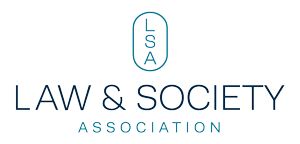SAN FRANCISCO 2026
Once a paper has been accepted and is assigned to a session either by the Program Committee or a Session Organizer, the author is expected to:
- Have a written copy of the paper six weeks prior to the meeting.
- Circulate the written paper among your session participants via email.
- Prepare a public presentation of the paper. You can speak from notes, a PowerPoint, or a parallel text, just be sure that your presentation conforms to the time constraints and format arranged by the session Chair. Do not simply read your paper out loud.
- If you cannot attend your session, you must formally withdraw from the submission system and contact the LSA Executive Office in advance of the meeting.
Additional Resources
Submission and Participation Resources
Submission Instructions
Plan Your Visit
Presentation Rules
- A paper must be presented by its author(s) — it may not be presented by another participant or panelist.
- LSA requests that all session organizers and presenters review the Disability Guidelines and take steps to accommodate attendees with disabilities by making their presentations accessible.
- We can only guarantee medical and religious scheduling requests. Those requests are due by January 31, 2026.
Length of Presentations
- The timing for your session will be determined and communicated by your Session Chair.
- All paper sessions and roundtables are 1 hour and 45 minutes long,
- Paper sessions typically include 4 to 6 papers.
- We encourage a format of 15 minute presentations, plus 15 or 20 minutes for Q&A at the end of the session.
- Author-Meets-Reader sessions are limited to one hour and 45-minutes.
Audio/Visual Considerations (applicable to in-person meetings)
- All meeting rooms for Paper Sessions, Roundtable, and AMR panels are equipped with an LCD Projector and screen. You will need to bring your own laptop, VGA adapter and slide advancers.
- If your presentation needs additional equipment, please contact the Executive Office by April 1, 2026.
Disability Guidelines
The Law and Society Association is committed to making arrangements that allow all its members to participate in its activities. LSA requests that all session organizers and presenters review the following guidelines and take the steps necessary to make the sessions accessible to attendees with disabilities.
Room Setup (applicable to in-person meetings)
- Space should be left for at least two wheelchairs in each meeting room. Please keep these areas, as well as the aisles, clear for persons who may be using wheelchairs, canes, crutches, or motorized vehicles. Space should also be left around the doors to allow adequate access.
- People who are deaf or hard of hearing and who use sign language interpreters, use captioning, or read lips need to sit where they can see both the speakers and the interpreter or captions. An interpreter may stand close to the speaker or within a direct line of sight to allow the audience to view both the speaker and the interpreter. Speakers should be aware of the location of interpreters and attempt to keep this line of vision clear.
Papers, Handouts, and Audiovisuals
- Speakers should bring five copies of their papers for the use of members who need to follow a written text.
- Please have electronic versions available for distribution for persons who cannot read printed text.
- Speakers who use handouts should prepare three copies in large-print format (boldface 14 to 16-point font size) and briefly describe or read all handouts to the audience.
- Avoid colored papers.
- Speakers should indicate whether they want papers and handouts returned.
- Consider the possibility that persons in the audience may be blind. Allow ample time when referring to a visual aid or handout or when pointing out the location of materials, and be sure to briefly describe all visuals.
Communication and Presentation
- Speak clearly and distinctly, but do not shout. Use regular speed unless asked to slow down by members of the audience, sign interpreters, or persons using realtime captioning.
- Since microphones often fail to pick up voices in the audience, speakers should always repeat questions or statements made by members of the audience. In dialogues or discussions, only one person should speak at a time, and speakers should identify themselves so that audience members will know who is talking.
- Avoid speaking from a darkened area of the room. Some people read lips, so the audience should have a direct and clear view of the speaker’s mouth and face.
This document is a slightly modified version of the current Modern Language Association’s “Access Guidelines for MLA Convention Session Organizers and Speakers,” Copyright 2002, and is used with the permission of the MLA.

